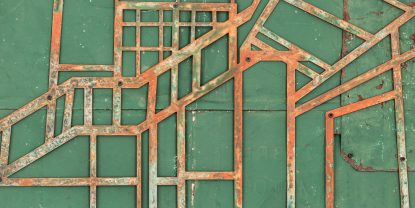Art Brussels 2022
Group Exhibition
April 28 — May 01, 2022
In its inaugural participation in Art Brussels, Mohsen Gallery represents works of four Iranian artists, Amir-Nasr Kamgooyan, Majid Biglari, Samira Hodaei, and Ali Phi, whose artworks are inspired by the notion of immigration. Uncertainty and the state of flux between two spheres of reality and abstraction may well be the main concern of these works, as if they arise from a situation in which the artist is forced to choose between a difficult yet familiar experience and an unknown future. In order to understand the new state of their homes, the artists present their personal, encrypted, and formalistic takes: Amir-Nasr’s works are saturated with contradictory details, while Majid and Samira, in their realistic abstractions, give the audience the chance to join in the interpretive experience, and Ali, who recreates something that is simultaneously real and intangible, ends up creating pure abstraction.
Amir-Nasr seeks to sort through an abundance of details, trying to make a puzzle with intemporal, tangled clues in his “Think Box” series. He does so using whatever happens to be close at hand in order to distract himself from the ugliness of reality. With an almost abstract approach in “Soot, Fog, Soil” series, Majid gives new meaning to the spaces that are etched on his mind. It is as if he wants to prepare his soul and mind in a therapeutic process before physically leaving all familiar elements that have defined him only to be thrown into an unknown environment. Samira, however, seems to be trying to rid her body off the bitter memories of her homeland through the difficult, ecstatic process of executing colored dots, right after arriving at the new setting. Through this and to make it easier to travel from the real to the abstract, she adds an implicit, personal sense to the idea of tablecloth, whose meaning goes beyond a simple fabric, commonly used in Iranian culture for serving food. In “Agnosia,” Ali Phi has also created a new mechanism to cope with an unfamiliar environment, with an eye on the generative aspect of art. He captures his brainwaves visually as he recollects memories, so as to explore the relation between his experiences and his utterly strange surroundings.
Each viewer can place the approaches of the artists as they oscillate between the figurative and the abstract on an imaginary line of which the viewer is the judge. In fact, the audience is encouraged to make new and utterly personal interpretations based on their experience of space and how it changes. The numerous, different readings are made possible through moving away from and approaching the works, while taking the time to ponder the works in detail and from a general point of view, deciphering the artists’ codes as they struggle to reach their ideal homes.



